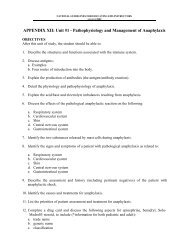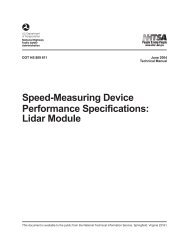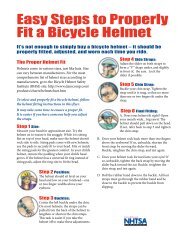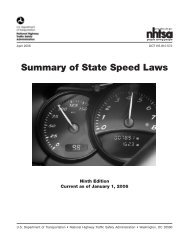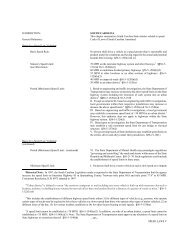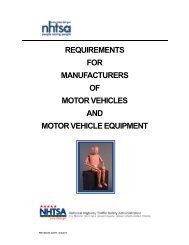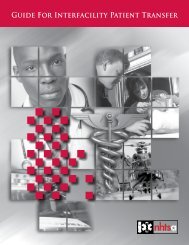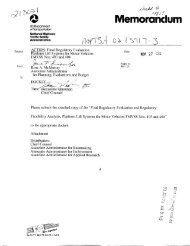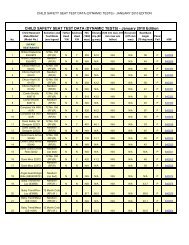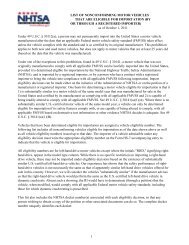Standard Practice for Emergency Medical Dispatch ... - NHTSA
Standard Practice for Emergency Medical Dispatch ... - NHTSA
Standard Practice for Emergency Medical Dispatch ... - NHTSA
You also want an ePaper? Increase the reach of your titles
YUMPU automatically turns print PDFs into web optimized ePapers that Google loves.
13. Continuing <strong>Dispatch</strong>er Education (CDE)<br />
1. A sound, ongoing program of continuing dispatcher education is<br />
essential. Without regular educational experience specifically direct to<br />
their practice, the EMD will become less proficient in the understanding<br />
of and compliance to the EMDPRS. The agency's continuing dispatch<br />
education (CDE) program should be coordinated and organized <strong>for</strong> the<br />
EMDs through the emergency medical dispatch QA/QI personnel, who<br />
through the evaluation of on-line case review, identify the specific and<br />
individual needs of the EMD. The training should meet as a minimum<br />
the following objectives:<br />
1. Develop an understanding of telecommunications and the EMDs' roles<br />
and responsibilities;<br />
2. Enhance the on-line skills in pre-arrival instructions and in all<br />
emergency telephone procedures within the practice of EMD;<br />
3. Improve skills in the use and application of all component parts of the<br />
EMDPRS, including interrogation, prioritization, and appropriate<br />
provision of pre-arrival instructions;<br />
4. Seek opportunities <strong>for</strong> discussion, skill practice, and critique of skill<br />
per<strong>for</strong>mance;<br />
5. Maintain a current understanding of the evolving science of emergency<br />
medical dispatching methods, procedures, techniques, and standards.<br />
1. Elements of Continuing <strong>Dispatch</strong>er Education---CDE at a minimum<br />
must include a review of the elements of the curriculum, with special<br />
emphasis on operational functions, protocol and policy compliance,<br />
new procedures, medical advancements, problematic situations, and<br />
greater in depth understanding of the medical conditions that are<br />
represented within the EMDPRS. CDE learning can be obtained through<br />
various educational methods and may include but is not limited to the<br />
following suggested CDE categories:<br />
1. Scenario Drills/Role Playing-Workshops and seminars related to EMS,<br />
preferably related to the skills of an EMD; that is, airway management,<br />
review of essential telecommunication skills, telephone scenarios,<br />
medical legal issues, computer aided dispatch, stress management,<br />
refresher courses, etc. (maximum of eight hours per year);<br />
2. Local planning or management meetings, including general<br />
organization <strong>for</strong> disaster mass casualty, and HAZ-MAT related<br />
incidences (maximum of four instructional hours per year).<br />
3. Case Review Activities-Quality assurance/quality improvement case<br />
review, planning and analysis of issues or findings identified by<br />
dispatch QA/QI, theoretically or in practice (maximum of four<br />
instructional hours per year).<br />
4. Audio-visuals (films, video tapes, etc.), that illustrate and review<br />
proper emergency care and EMD procedures. Titles should be<br />
restricted to those specific to EMS, preferably EMD related (maximum<br />
of two instructional hours per year).<br />
5. Didactic Lectures-Teaching the general public any topic within the<br />
scope of basic EMD/EMS relations. Synopsis of the subject taught<br />
should be included in the CDE documentation (maximum of two<br />
instructional hours per year),<br />
70



